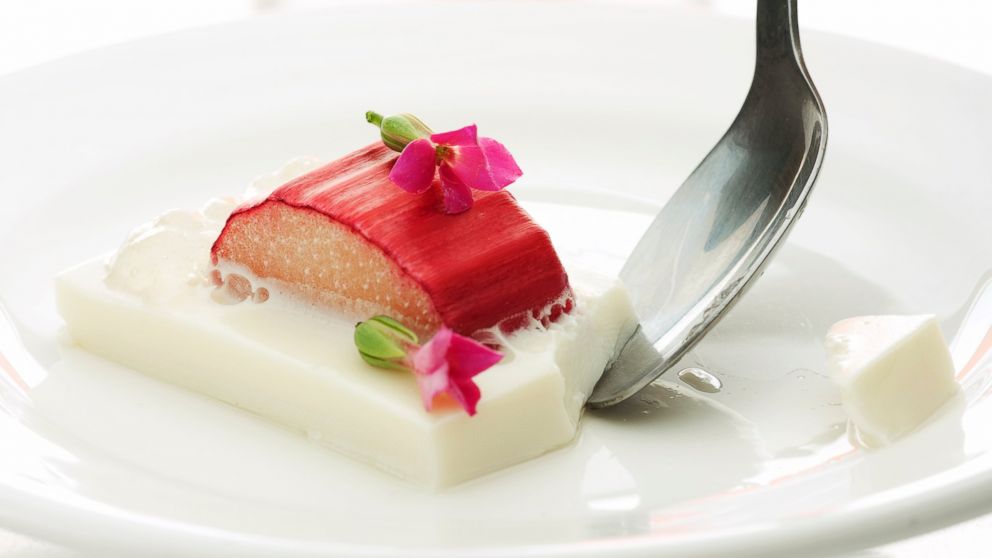5 Futuristic Food Trends
If we are what we eat, it's about to get very weird.

Nov, 21, 2013— -- intro: If we are what we eat, it's about to get very weird. There is a revolution taking place that's reshaping the idea of what makes it onto your plate and into your stomach.
Jeff Lipton, a researcher who develops 3D printed food at the Cornell Creative Machines Lab, in Ithaca, N.Y., says there is definitely an exploration going on right now in food.
"Most of the innovation is aimed at overturning the status quo," Lipton said. "The focus is on either making food production more efficient or more customized."
Read on for five food trends that will soon be bringing the future to a kitchen near you.
Recommended: 3D Print Everything
quicklist: 1category: 5 Futuristic Food Trendstitle: 3D Printed Foodurl:text: In the not-too-distant future the "D" in 3D printing will stand for doughnuts, drumsticks and deviled eggs. Several companies are already experimenting with printing foods like chocolate and pasta by mixing together a series of dry ingredients to use as a sort of edible ink.
Currently, most 3D food printers can only print out basic foods that require only one or two ingredients. A few can print with up to six ingredients at a time. As they get more sophisticated, experts predict they'll be able to print out complete customized meals on demand.
Beyond giving every consumer the ability to print up exactly what they crave, 3D-printed edibles have the potential to revolutionize space travel. NASA has awarded a Small Business Innovation Research contract to Systems and Materials Research Consultancy, based in Austin, Texas, to study the possibility of printing food for space travel.
This would solve the longstanding problem of how to feed astronauts on the long flight to Mars. Could be that the first humans to set foot on the red planet will celebrate by printing up a cake.
Recommended: 3D Printer Makes Women's Pantiesmedia: 20957240
quicklist: 2category: 5 Futuristic Food Trendstitle: In-Vitro Meaturl:text: Earlier this year, Dutch scientists grew hamburger from the muscle tissue of a cow and invited journalists into the lab for a taste test. Reviews were mixed but it's early days for lab-grown meat. If perfected, it could end the suffering of farm animals and help fight world hunger.
Beyond the yuck factor, cost and time are also major stumbling blocks for the technology. The test tube burger took two years and $325,000 to create.
Undeterred, the Next Nature Foundation, posted the In Vitro Meat Cookbook on the fund raising site Indiegogo. Among the questions the cookbook hopes to answer, "Is lab-grown meat kosher?"media: 20957229
quicklist: 3category: 5 Futuristic Food Trendstitle: Tomato, Potatourl:text: What would you call a plant that grows tomatoes up top and potatoes down below? A pomato? A tompato? The breeder of just such a plant, British seed catalog Thompson & Morgan, has settled on the name TomTato.
The multi-tasking plant is not genetically engineered in the modern sense of the word. Instead it's a hybrid made by grafting the two plants together, the cataloger explained in a statement. Normally this is a difficult horticultural feat to pull off, but it's possible in this case because the tomato and potato are closely related and share enough genetic traits to happily cohabitate on the same stem.
The ketchup-and-fries potted plant will only be sold in the U.K. for now. It's an annual, which means growers must buy new seedlings every year. A similar plant called the Potato Tom is available in New Zealand.
Recommended: 3D Printing Goes Beyond the Labmedia:20956969
quicklist: 4category:5 Futuristic Food Trendstitle: Molecular Gastronomyurl:text: Molecular Gastronomy is another culinary trend that borrows techniques from the science lab. By cooking with a pinch of physics and a dash of chemistry, chefs can transform the tastes and textures of food.
For example, you can whip up some apple caviar using a method called basic spherification. This involves submerging apple juice that's been mixed with the chemical sodium alginate into a bath of calcium to form a sphere. The juice transforms into tiny balls with thin, barely detectable membranes that burst in your mouth like fish eggs when you bite into it.
media:20957257
quicklist: 5category:5 Futuristic Food Trendstitle: Soylenturl:text: Rob Rhinehart, the chief operating officer of Solylent, said that many people find food preparation boring and expensive. His answer is a 33-ingredient, grayish-colored liquid supplement designed to provide all the essential nutrients. And it can be customized for preferences, allergies and disease management.
Rhinehart said it's possible to subsist on Soylent exclusively but most of the testers who tried it, drank it for breakfast and lunch, then had a regular meal for dinner. Because it is classified as a supplement rather than food, it is not regulated by the Food and Drug Administration. The company has 1.5 million pre-orders, and the product ships in January.
Because production is relatively inexpensive and scalable, Rhinehart said Solyent is more than just a convenience. It has potential to help solve the food crisis in the developing world. media:20956944